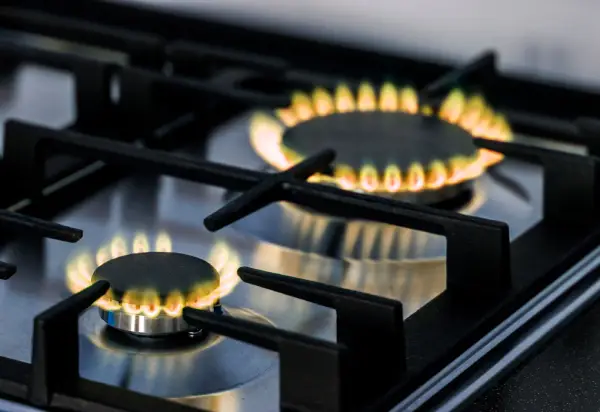To expand your news reach, consider advertising with our media partner, Patch Media, at https://heypapipromotionsmedia.town.news/. Patch is a nationwide news network comprising over 1,000 hyperlocal websites dedicated to community news across the United States. For press release distribution services, please call or visit https://heypapipromotions.com/advertise.
The presence of an orange flame on your gas stove may seem innocuous, but it actually signals significant concerns. Many individuals perceive yellow or orange flames as typical, unaware of the potential dangers they pose. However, such flames pose risks to both your kitchen and your health, potentially leading to hazardous situations.
Consistently burning orange flames on your gas stove indicate incomplete combustion of gas, which can have adverse effects on your health and kitchen utensils. It's crucial to address this issue promptly by fixing or adjusting your burners.
In this article, we'll delve into what an orange flame signifies, its potential harm, and effective ways to rectify it.

What Does Orange Flame on Gas Stove Mean?
If your gas stove emits an orange flame, it indicates incomplete combustion, resulting in the production of carbon monoxide—a toxic gas associated with severe health risks.
Cooking over an orange flame can introduce issues with food quality, making it inadvisable. Moreover, exposing your family to the dangers of carbon monoxide poisoning is a risk that should not be taken lightly. Several factors can contribute to the appearance of an orange flame on your gas stove:
- Airflow Issues: Insufficient airflow into the burner can hinder proper combustion, resulting in an orange flame. This may occur due to clogged burner openings, dirt or debris in the burner, or inadequate ventilation around the stove.
- Gas Pressure: Fluctuations in gas pressure can affect the combustion process, leading to an orange flame. Low gas pressure can result in incomplete combustion and the production of a yellow or orange flame.
- Dirty or Worn Burners: Buildup of grease, food residue, or rust on the burner surface can impede the flow of gas and disrupt combustion, causing the flame to appear orange.
- Moisture or Contaminants in the Gas: Moisture or impurities in the gas supply can interfere with combustion, altering the color of the flame.
- Incomplete Mixing of Air and Gas: If the air and gas mixture entering the burner is not properly balanced, combustion may be incomplete, leading to an orange flame.
While complete combustion yields a blue flame and maximizes fuel utilization, incomplete combustion generates an orange flame, indicating both health hazards and inefficient fuel consumption. Recognizing the significance of this warning sign is crucial for household safety.
Furthermore, an orange flame compromises cooking efficiency, as it fails to attain the high temperatures necessary for optimal performance. With temperatures hovering around 1000 degrees Celsius, cooking times are prolonged, resulting in delays in meal preparation. Therefore, promptly addressing the presence of orange flames on your gas stove is imperative for maintaining safety and efficiency in your kitchen.
Furthermore, an orange flame compromises cooking efficiency, as it fails to attain the high temperatures necessary for optimal performance. With temperatures hovering around 1000 degrees Celsius, cooking times are prolonged, resulting in delays in meal preparation. Therefore, promptly addressing the presence of orange flames on your gas stove is imperative for maintaining safety and efficiency in your kitchen.
Should My Gas Stove Have An Orange Flame?
Contrary to common belief, an orange flame does not signify that your appliance is operating safely. In fact, it can indicate a potentially serious underlying issue with the stove or its components.
Gas stoves require precise amounts of oxygen and fuel to produce a blue flame, which denotes efficient combustion. However, when there's an imbalance, with too much fuel and insufficient oxygen in the burner orifice, the flame may appear yellow or orange. This type of flame can emit carbon monoxide (CO), a toxic gas when continuously inhaled.
Moreover, if left unaddressed, this type of flame can lead to structural damage to your home due to increased heat buildup and flames that are more challenging to extinguish compared to normal blue flames.
Gas stoves require precise amounts of oxygen and fuel to produce a blue flame, which denotes efficient combustion. However, when there's an imbalance, with too much fuel and insufficient oxygen in the burner orifice, the flame may appear yellow or orange. This type of flame can emit carbon monoxide (CO), a toxic gas when continuously inhaled.
Moreover, if left unaddressed, this type of flame can lead to structural damage to your home due to increased heat buildup and flames that are more challenging to extinguish compared to normal blue flames.
Comments